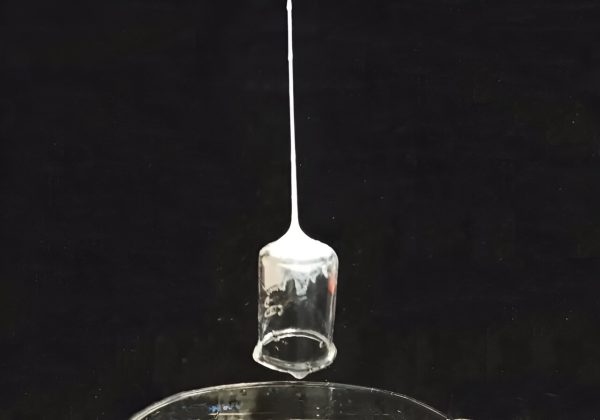It would be any kid’s dream to swing through the air like Spider-Man, shooting webs from his wrists and zipping from place to place in an instant. However, this extraordinary superpower is no longer just a dream. At Tufts University, scientists are turning that superhero dream into reality, creating technology that could one day let people shoot strong, web-like strands—just like Spidey!
The core of this technology lies in fibroin, a protein found in silk moth cocoons, which serves as the base material for the artificial webs. In general, fibroin is an insoluble protein that has the ideal combination of strength, elasticity, and lightweight properties. By adding dopamine—a compound that helps the material solidify rapidly when exposed to air—the research team was able to replicate the adhesive, shootable nature of Spider-Man’s webbing. The key lies in the rapid evaporation of organic solvents like acetone, which transforms the liquid silk into a solid, sticky fiber that can adhere to a variety of surfaces, from metal to wood.

In addition to silk fibroin, the Tufts team incorporated chitosan, a material used for the exoskeletons of insects and crustaceans. This compound significantly enhances the tensile strength and adhesiveness of the synthetic silk, increasing its performance beyond what natural silk could alone achieve. Chitosan increased the tensile strength of the web fibers by up to 200 times and boosted their adhesive capabilities by 18-fold, making them more versatile and robust for practical use.
The researchers tested these fibers by lifting objects that were much heavier than the web-like material itself, including steel bolts, wooden blocks, and glass beakers. These objects weighed as much as 80 times more than the silk fibers, highlighting the remarkable strength of the material despite its delicate appearance.
Despite the impressive results so far, the web-slinging technology is still in its early stages, and scaling up production to make the material commercially useful is a challenge. One area of focus for the Tufts team is improving the deployment mechanisms of the technology to make the synthetic webs shoot more effectively. Current systems require precise control of solvent evaporation, fiber formation, and adhesion, which are difficult to automate at large scales.
The work at Tufts University brings science fiction one step closer to becoming reality. By harnessing nature’s most efficient designs, researchers have created a material that not only mimics Spider-Man’s web-slinging ability but also offers additional practical applications in areas as diverse as construction, medicine, and emergency response. The versatility of this new technology is simply limitless.
And while we may not see people swinging between skyscrapers anytime soon, the foundation has been laid for a new generation of bio-inspired materials that could change how we interact with our environment. These synthetic webs offer a glimpse of the future, where biomaterials inspired by nature and superheroes alike can solve real-world problems in ways once only imagined in comic books.














































































































































